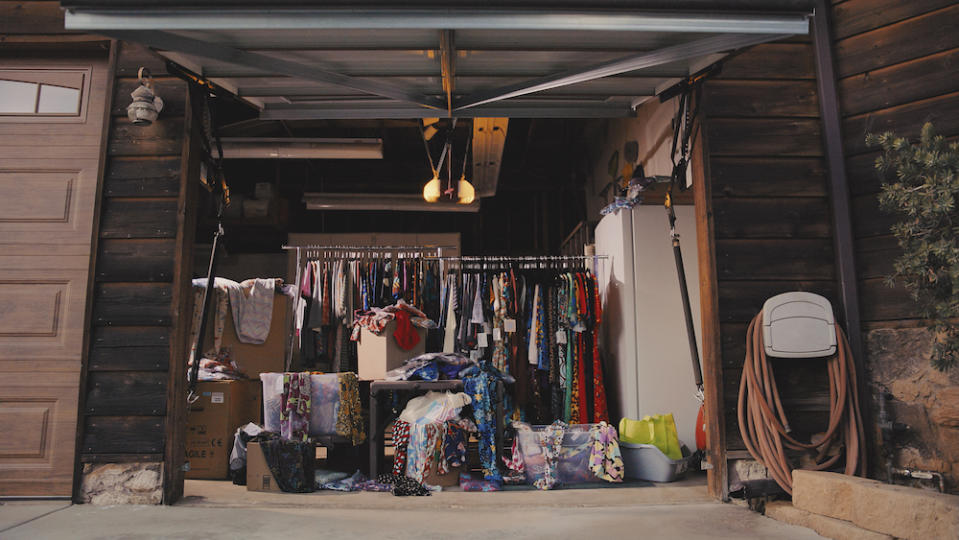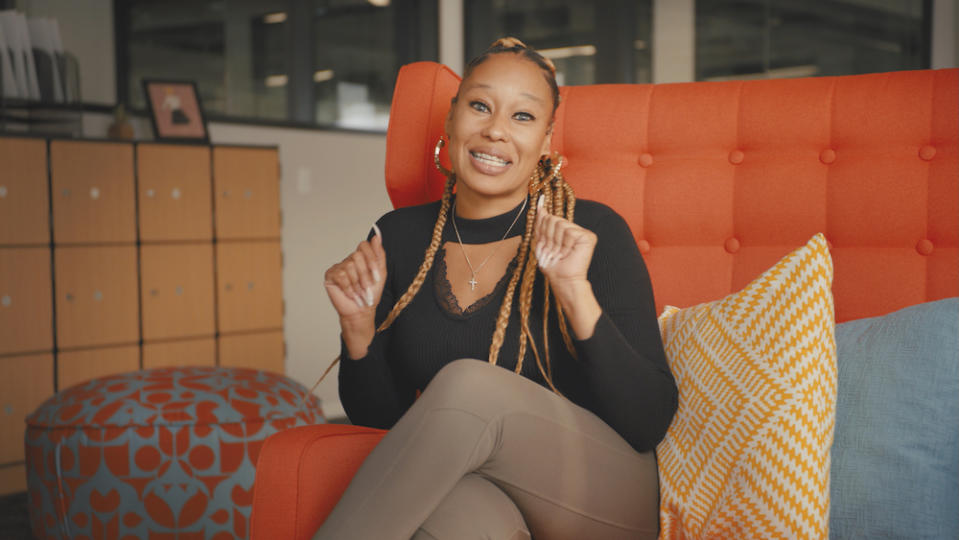How the LuLaRoe Pyramid Scheme Became the Explosive Amazon Docuseries ‘LuLaRich’ (EXCLUSIVE)

Jenner Furst and Julia Willoughby Nason had only been working for a few months on “LuLaRich,” their docuseries about the clothing company LuLaRoe — which operates as a multi-level marketing company, a.k.a. a pyramid scheme — when they learned the company’s co-founders, DeAnne and Mark Stidham, were willing to sit down with them.
The project, which Furst and Nason directed for Amazon Studios, had been the idea of Cori Shepherd Stern and Blye Pagon Faust of Story Force Entertainment. Stern, who’s from Florida, had for years seen her friends from high school hawking LuLaRoe clothing all over her Facebook feed. “There were these cat leggings and pizza-print leggings — and not just one kind of pizza print, multiple pizza prints,” Stern recalled. “I was trying to figure out what the hell is going on.”
More from Variety
Peter Nicks on 'Homeroom' and the Oakland Students Who Got Police Out of Their Schools
Steve McQueen to Debut Three New Documentaries on Amazon Prime Video in September
The 10 Biggest Takeaways From Variety's Virtual Truth Seekers Summit
LulaRoe sold clothing — its signature item were the leggings Stern saw all over Facebook, oft-described as “buttery soft” — but it mostly sold expansion. As with all MLM-structured companies, its consultants were rewarded for each new retailer they signed up, and got a percentage of their sales: thus the pyramid metaphor. Those who got in early were able to make money, but anyone who came in later didn’t stand a chance. It all added up to a reported $1.8 billion in sales in 2016, from over 80,000 independent retailers. Then it all fell apart.
To explain how and why, the Story Force partners went to Furst, Nason and Mike Gasparro at their company The Cinemart, because they admired the filmmakers’ approach to the 2019 Hulu documentary “Fyre Fraud” — yes, a LuLaRoe documentary would share elements with that chronicle of the Bahamian music festival that turned out to be a catastrophic scam. “They are the perfect team to do this story in terms of the tone and the expertise,” Faust said.
As Nason and Furst prepared for production last summer with Amazon behind them — and were lining up interviews with former LuLaRoe retailers, ex-employees of the company and multi-level marketing experts — the directors had approached the Stidhams about participating.
“We were very straight with them,” Furst told Variety. “We said, ‘We’re making this film and we think that it could be one way with you and it could be one way without you. But either way, we want to give you the opportunity to tell your own story.’”
In August 2020, the Stidhams said yes. So without having interviewed anyone else, and while the film and television industry was just restarting after the pandemic shutdown, Furst and Nason went to LuLaRoe headquarters in Corona, CA for a six-hour sit-down with DeAnne and Mark Stidham.
Completed with breakneck speed, “LuLaRich” will premiere on Amazon Prime Video on Sept. 10 and unfold in four parts. The interview with the Stidhams serves as a touchstone throughout the series, as the filmmakers tell the story of LuLaRoe’s “catastrophic growth,” in the words of Mark Stidham, and LuLaRoe’s ostentatious, fetid implosion. (Literally: As the company struggled to fill orders, leggings left out to mold in the rain at the warehouse were sent to retailers, despite being rancid.)
Nason and Furst talked with Variety about how LuLaRoe seduced retailers into joining the pyramid, how social media both built up and then tore down the company, and what their predictions are for the future of LuLaRoe.

Courtesy of Amazon Prime Video
The sitdown with the Stidhams would be, the filmmakers knew, their “Frost/Nixon” moment.
As directors, Furst and Nason want to do “360-degree storytelling,” Furst said. If the Stidhams are the villains of “LuLaRich,” then they wanted to give them their say: “If the villain isn’t sitting there and telling us their point of view, we don’t think that that’s a full story.”
They prepared for the interview by studying dossiers of information; in the case of LuLaRoe, there was a tonnage of legal documents for them to examine. They even acted out different interview scenarios. “We do a lot of role playing,” Furst said. “But in the end, it’s got to be a conversation.”
The Stidhams’ story starts at the beginning — with how each of them had grown up in the Mormon Church, and how DeAnne had begun making the clothing that led to the founding of LuLaRoe. It’s all amicable, even as the directors press them about how the company’s growth began to cause problems. And how sketchy its economics worked from the start.
“They were very candid with us,” Furst said, despite the fact that “they were completely talking about things that made no sense at one point.”
If the Stidhams are forthright about anything, it’s that LuLaRoe grew out of their control. “There’s a bigger part to this story — this business was a runaway train from even the founders,” Nason said.
Another purpose the interview served, Nason said, was to inspire questions the directors would later go on to ask the retailers — what their experiences had been, for instance, as Mark and DeAnne were buying cars and throwing massive LuLaRoe events at which A-list talent such as Katy Perry and Kelly Clarkson were paid millions of dollars to perform.
Nason and Furst also witnessed first-hand the dynamic between the couple, in which DeAnne acts like the ditz to Mark’s daddy. It’s a shtick that also plays out in the footage in “LuLaRich” of the Stidhams being deposed by the state of Washington in a lawsuit against LuLaRoe.
Parroting DeAnne, Furst said: “‘Oh, I don’t read any emails,’ ‘I don’t go to any meetings,’ ‘oh, my son handles that’ — ‘you’ve got to ask Mark that question.’”
“But the reality is she’s a cunning businesswoman.”

Courtesy of Amazon Prime Video
What LulaRoe was actually selling was the dream that the retailers — who were mostly mothers — could get rich at home.
When the Stidhams started LuLaRoe in 2012, the economy was just recovering from the Great Recession, after which, as Furst put it, “the middle class is decimated, and there isn’t real opportunity left.” The people who signed up to be distributors, he said, were prime targets for multi-level marketing rackets, especially, as “LuLaRich” talking head Jill Filipovic says in the series, because of the “Girlboss” message embodied by DeAnne.
“What DeAnne was doing when she was traveling around the country with dresses in her trunk was really bringing women into the dream,” Furst said. “The problem is the dream wasn’t scalable for anybody else.”
The ex-retailers featured in “LuLaRich” tell stories about maxing out their credit cards, having their houses foreclosed upon and declaring bankruptcy. They yearned for extreme wealth, of course, but they would have settled for “just the simple financial security of being able to pay their rent,” Furst said.
An irony of the collapse of LuLaRoe is that in banding together to share their negative stories about the company, some of the actually women did achieve the purpose they’d sought in the first place — as well as finding a community of their own. “What many of them did get was an aspiration to fight for something beyond themselves,” Furst said.

Courtesy of Amazon Prime Video
Social media — especially Facebook — gave life to LuLaRoe.
Facebook’s announcement in 2015 that users could live-stream videos coincided with — or perhaps led to — the peak of LuLaRoe. Retailers would hold flash sales on Facebook Live, which caused buying frenzies. Many of the women would become “Facebook famous.”
The archival footage of these sessions serve “LuLaRich” well.
For Nason, there’s a reason social media and pyramid schemes have such a mutually beneficial relationship. “I think social media is essentially a mirror of this type of company,” she said. “The structure of social media and how we engage in it as human beings is very much like a multi-level marketing company.”
They’d seen the same phenomenon play out in “Fyre Fraud,” when Fyre Festival co-founder Billy McFarland paid influencers to peddle the event — something that ended up blowing back on them after it turned into a calamity. The appeal, Furst said, is “the dream, the pitch, the idea of FOMO — or the idea of I could be living a life beyond my wildest dreams, just like that person.”
That’s why these Facebook-famous retailers were so crucial to LuLaRoe. “For so many women and families around America, the reality is that you’re struggling,” Furst said. “And so if you can come up with a pitch to those people and say, ‘This will pull you out of your despair and this will give you a life beyond your wildest dreams, look at me,’ that’s a timeless story. That’s ‘Death of a Salesman,’ Willy Loman-type stuff.”
Of course, social media giveth, but it also taketh. When things started to turn bad for LuLaRoe, and clothing’s quality fell — sometimes arriving damaged or putrid — where did the retailers complain? On Facebook and Instagram, of course!
Not only did the retailers’ gripes go viral, gaining media attention, but disgruntled sellers formed a private Facebook group called “Defectors’ Support,” which counted thousands of members. In the group, LuLaRoe consultants compared stories, and united to try to bring the company down.
Defectors’ Support was “a huge source” the filmmakers tapped into for their reporting, Nason said.
“The silver lining to social media is that quick lightning-rod connection people have with each other,” he continued.
Furst spoke admiringly about the consumer protection investigation the state of Washington did into LuLaRoe, which was filed in 2019, and resolved in February 2021: The company paid a $4.75 million fine.
“The AG did a great job,” Furst said, “but the Facebook group did a better investigation.”

Courtesy of Amazon Prime Video
The tone of “LuLaRich” was tricky to achieve.
While there’s something campy about DeAnne and Mark, LuLaRoe has literally ruined lives: So what would be the right tone for “LulaRich”?
The filmmakers found it somewhere unexpected.
“The tone right away was Nicole Kidman’s performance in ‘To Die For,’” Nason said, which illustrated “a dark comedic aspect” of American culture.
Furst said they wanted to be clear that they were standing with the retailers.
“We don’t laugh at people,” he said.

Courtesy of Amazon Prime Video
LuLaRoe is — incredibly — still in business. So what do the filmmakers predict for its future?
“That probably would be best done by a forensic accountant, not us,” said Furst with a laugh.
The company has scaled down since its 2016 heights. “It’s been effective to focus on fewer people,” Furst added. “There’s plenty of happy customers and people who are behind the LuLaRoe message — and good for them.”
But Furst does wonder whether other states might follow Washington’s lead and file consumer protection lawsuits against the company. “There’s nothing that would prevent California or New York or New Jersey or North Carolina or Florida or Texas from doing what Washington did,” he said. “There’s plenty of AGs that I think would see the value in defending their constituents from these types of businesses.”
The story of LuLaRoe, Nason thinks, is in part about the myth of the American dream: “Thinking, If I just think positive, it’ll happen!” And that thinking even drove, and is still driving, the Stidhams themselves.
“There’s humanism in Mark and DeAnne’s story, just as much as there is in the victims’. Because everybody wants to become a billionaire — but all that glitters isn’t gold,” Furst said. “Sometimes that gold can be handcuffs. And sometimes you can go to jail chasing that gold.”
Best of Variety
Labor Day Sales Are Already Live: Here Are the Best Deals So Far
From Wanda and Vision to Barb and Star: The Best Couples Costumes to Wear This Halloween
Sign up for Variety’s Newsletter. For the latest news, follow us on Facebook, Twitter, and Instagram.

 Yahoo Finance
Yahoo Finance